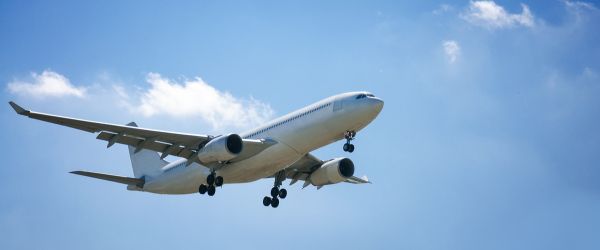One of the more interesting questions posed on a general knowledge show was “Why are planes painted white?” Needless to say, that piqued our interest. Not to say that we don’t spend countless hours contemplating all things travel and devising all manner of ways to save on travel expenses, but in all sincerity, this is not something we’d given much, if any, consideration. The weight of travel bags and shall we say heavier passengers, yes, but the reason that planes are painted white – that’s a resounding no. But we got straight to it and did a little digging to uncover the intriguing reasons behind the ubiquitous white paint on aeroplanes and discover how even the smallest details in the world of travel can carry significant implications.
The financial intricacies of the aviation industry can be truly astounding. It is abundantly clear that even the colour of an aeroplane can have significant cost implications.
You might be wondering, why white? Well, it turns out that there’s more to this seemingly straightforward choice than meets the eye. One of the most compelling reasons airlines prefer to paint their planes white is the substantial weight savings it offers. Darker paints, while they may look sleek, can add extra weight to an aircraft. In fact, applying a darker colour to a plane’s exterior can be equivalent to carrying around the weight of eight additional passengers on each flight. With the relentless drive to enhance fuel efficiency and reduce operational costs, every cent counts.
United Airlines, for instance, made headlines when they decided to switch to lighter paper for their inflight magazines. It might not sound like a substantial change, saving just one ounce per copy, but when multiplied across an entire flight, the savings amounted to roughly 11 GBP (British Pound) per flight. That seemingly small sum, when scaled across United Airlines’ entire fleet over a single year, translated to a staggering 170,000 gallons of fuel worth approximately $290,000.
But the airline industry’s attention to weight savings doesn’t stop there. Even the beverage carts have undergone transformation. Modern carts weigh approximately half of what their older counterparts used to. This reduction in weight may seem insignificant, but it contributes to lower fuel consumption and overall operating costs.
The aviation industry has seen significant changes over the past two decades, and one area of transformation is the average weight of air passengers. Twenty years ago, passengers tended to be lighter on average. However, with changing lifestyles and demographics, the average weight of passengers has increased. This shift in passenger weight has posed challenges for airlines in terms of fuel efficiency and capacity.
As airlines grapple with the added weight of passengers, they have also had to consider the number of seats on their aircraft. To offset the increased weight, some airlines have reduced the number of seats on certain routes or opted for lighter seating materials. This strategic adjustment helps maintain the balance between passenger comfort and profitability.
Looking back to the 1980s, there’s a remarkable tale of Robert Crandall, the then-head of American Airlines, who made an inconspicuous yet ingenious decision. He removed one olive from each salad served on American Airlines flights. Remarkably, nobody noticed the missing olive, but the airline saved a substantial £40,000 per year by doing so. This anecdote showcases the lengths to which airlines have historically gone to trim costs, even when it comes down to the tiniest details.
At Rennies BCD Travel, we’re more than just spectators in this complex financial puzzle; we’re here to be your guides. Our dedication to discovering creative ways to make your travel more efficient and enjoyable is our unwavering promise. When you embark on your journey with us, it’s not just about booking flights; it’s about achieving cost savings and reaching the pinnacle of operational excellence.




